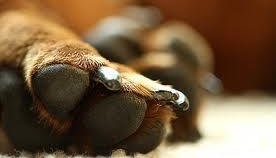
Technician Tails: Snack Bag Suffocation Can Strike any Pet.
I've been an emergency veterinary technician for 14 years now. With those years come a lot of stories to tell; some funny, some happy, some gross, and yes, too many sad ones. There are always those patients that stick with you. There’s one dog that I never laid eyes on who’s story stuck with me over the last few years.
I learned about him when I was working a shift for our Internal Medicine department at Hope. I picked up a sympathy card that the girls were passing around to sign for the owners. Over and over again I read “sorry for your tragic loss”. When I asked the other technician what happened to this poor dog she told me the owners came home to find that he had gotten into the trash and pulled out a chip bag. I could just picture how devious this pup thought he was in this moment. Ecstatic with his prize, he began licking the inside edges of the bag and when his tongue had cleaned those edges spotless he moved further inside…probably scooting the bag across the floor so he could shove his head in further to get at that tiny crumb at the bottom of the bag. And here is where the tragedy starts…unable to get this bag off his head, and with no one around at home to rescue him, he suffocated and died.
Chip bags are made of a Mylar like material to seal in freshness. When a dog sticks its head into a bag and starts to breathe it creates a vacuum seal around their neck. Panic ensues, they breathe faster, the seal gets tighter and they die in minutes. This is the visual that I’m haunted by to this day for a dog I’ve never cared for or for owners I’ve never even met.
I figured if I have never heard of chip bag suffocation before, how many other pet owners do not know about it? I would have never thought of it as a danger for my dog even though we are constantly reminded of it for our small children. If I can train myself to cut up a 6-pack plastic soda ring into confetti size trash so no turtle or bird will ever be harmed again…I can certainly train myself to look at any bag I throw into the trash as a potential death trap to my dog. Chip bags, cereal boxes, any bag liner with tasty morsels at the bottom (even their own dog and cat food bags) are all serious suffocation risks to our pets.
When I looked into bag suffocation further I discovered a website and Facebook page dedicated to all the dogs that have lost their lives to this tragedy and how to help educate and prevent other dogs from doing the same. Sadly, it shares photos of so many cute dogs lost their lives this way.
I can wrap my head around loss due to cancer, disease, and age. I can even understand loss due to accidents such a hit by cars and attacks by other animals; partly because I’ve seen so much of it over the years. But this chip bag suffocation makes me cringe every time my mind lets me go there. I thought I would share this story with you to hopefully spread the word and help save a few lives down the road. PreventPetSuffocation.com offers some good tips that I thought I would also share with you:
- Keep all chip bags and food bags safely stored away from your dog’s reach.
- Tear or cut up all chip bags and food bags after use.
- Keep all trash can lids tightly fastened, locked, or behind a cabinet, especially in the kitchen.
- Keep kitchen pantry door closed.
- Learn CPR for pets.
- Do not allow your pets to roam freely in the house while you are away.
- Alert all your friends and family about the suffocation dangers of bags.
- Lobby to companies like Frito Lay and other snack, cereal, and dog food manufacturers to put warning labels on their bags.
- Share this website on Facebook, Twitter, and other social media.
- Visit and “Like” Prevent Pet Suffocation on Facebook, and share.
To sign a petition for Frito Lay to add warning labels to their bags, click here.
Amy is a certified veterinary technician that has worked in emergency veterinary medicine for the last 14 years in the Philadelphia region. She began her career at the University of Pennsylvania Veterinary Hospital and then transitioned to Hope Veterinary Specialists in 2004 as the Director of Nursing. She currently works as the Director of Marketing for Hope and still keeps up with her skills as a veterinary technician.
No longer working .
9ygreat post!